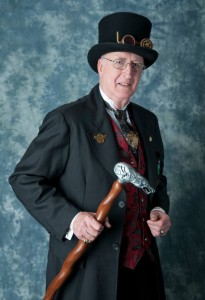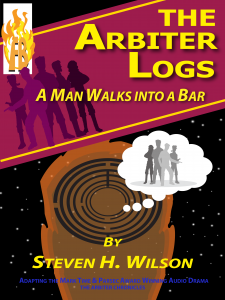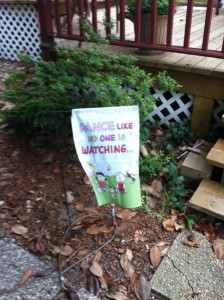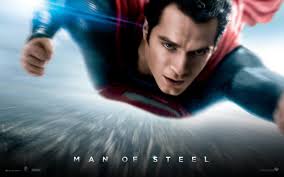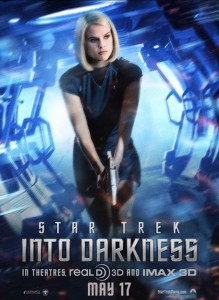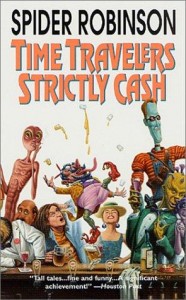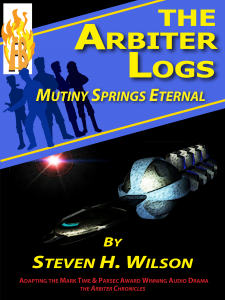This past Thursday, SF Fandom lost a giant, and I lost a dear friend and mentor. Nor am I alone. With the death of Marty Gear, dozens, if not hundreds of people are mourning the loss of a family member, a second father, a second grandfather. Marty was all these things to so many people that it’s hard to believe he was only one, sadly mortal, man.
I don’t remember when I met Marty, or first heard his name. As a fan growing up in and around Columbia, where Marty lived for the last half of his life, I’m sure I began to hear his name in high school, as a lightning rod, a guy very, very involved in local fandom and especially in Balticon. As I began to work the local cons, I heard his name, spoken reverently, as the guy who was helping to keep the Costume Call (an outdated name) or Masquerade together. At some point, I recognized his face, though I knew it behind makeup in the persona of Uncle Vlad, the genial host of the Balticon Masquerade, whose store of bad vampire jokes was never exhausted. I knew that, if there was a Masquerade and Marty wasn’t emceeing it, he and his wife Bobbie were either onstage competing, or they were in the green room, keeping things calm as dozens of costumers (and the Masquerade staff) sweated and became anxious and crabby. I knew that my spiritual sister, Cindy Shockey, and later Steve and Ann Lesnik, who ran my con’s Masquerades, looked on Marty and Bobbie as their convention parents.
When Farpoint (my Baltimore-based SF con, in case you don’t normally follow my blog or don’t have my life history memorized) began to make a real push to be more of a fan con around the year 2000, we added a fan guest of honor slot. Marty was our second pick. (Second only because we decided to honor fanzines the first year, and costuming the second year.) It was that year that he called me up and said, “We need to have lunch, so you can tell me exactly what you want a fan GoH to do.” I had never had a personal audience with Marty. Hell, I didn’t know he knew who I was! But he did, because Marty kept up with what was happening in Fandom around him. We were his tribe, after all. He was our elder, our shaman, and he needed to know what we needed from him.
I was comfortable from the moment we sat down to lunch, because Marty made you comfortable. (Unless you’d done something to disappoint him, and then he made you want to hide in a corner and cry.) In an hour or so at lunch, he told me his capsule Fandom history. Over the years of our friendship, he would tell me enough of his life history for me to know I could never hear it all, that it was all interesting, and that I’d never tire of hearing his stories, even if he told the same one a hundred times.
My favorite:
Young Marty Gear was about sixteen and attending WorldCon 1956, which records say was held in New York. He was in the dealers’ room looking at books when and older gentleman came up to him and casually asked him what he liked to read. Marty gave a few names, but said that his hands-down favorite books were the Lensman adventures by E.E. “Doc” Smith. At this point his new acquaintance shouted excitedly to someone nearby, “Here, Mother! Come meet this young man who likes those stories I’m always having you type for me!”
(Hope I got that right!)
The legendary Doc Smith took Marty under his wing that weekend. He took him to the Hugo Awards presentation, where he sat on the balcony with Doc, Robert A. Heinlein, Sprague DeCamp, and I believe Isaac Asimov. (Lesson One – If you have someone in your life who tells you wonderful stories, write them down! Before you know it, all the participants in the story will be dead, and there’ll be no one to ask about the details, as in this case.)
Okay, a younger generation might say this is all creepy. An older man picks up a teenager in the dealers’ room and squires him around the convention for the rest of the weekend? Yeah, I’ve seen situations like that that were creepy. Trust me, this wasn’t. You see, this is what SF fans do. (And Doc Smith, like all SF Authors, was also a fan.) We seek out and identify new souls to join our crusade. There are damned few of us in this hobby. From my perspective it seems there are fewer all the time, especially this week. We know we need to keep the new brethren coming, and we get very, very excited when we meet a person who is young and enthusiastic about our hobby.
You know why we do that? I’ll let you in on a secret: SF Fans never get old. We don’t. Oh, sure, we age. We die. But we retain, for all our lives, that sense of wonder that made us say as kids, “I love these stories about worlds beyond mine, and future times beyond mine; about what’s possible, and what’s not possible but should be. I. Want. More.” We retain it, or we stop being fans. And that sense of wonder keeps us young. And that sense of wonder also feeds on the hope and enthusiasm of others who have it. Not in any vampiric way (though Marty fancied himself a vampire), but in a way that gives even as it takes, a symbiosis. Two fans together, if all is as it should be, feed each others’ level of excitement.
Going forward from that encounter, Marty became the older man who welcomed newcomers to his community. He made us feel comfortable, he made us welcome, he encouraged us to do our best, and, if we needed help, he pitched in and worked his ass off to help us.
When his wife Bobbie left us in 2005, Marty reached out to me and said, “Hey, don’t you and your fannish friends gather on Friday nights?” I said yes, we did. “Would it be okay if I joined you this week?” he asked. Friday had been his date night with Bobbie, and he was at lose ends. Of course Marty was welcome, and he became a regular fixture at our Friday gatherings, always brining goodies from Trader Joes, Wegmans, or even Ikea. My kids were addicted to the flavored sparkling cide Ikea sells, and Marty rarely came to our door without a bottle or two in his hand.
Nor, once he became firmly one of my Fandom family, did Marty forget my kids’ birthdays. And when we came to his house, there was a workstation in his office for Christian, my youngest, to safely surf the Internet and work on art projects. If there were multiple little ones, games would be set up. My kids lost their grandmother in 2003, and it was devastating. When Marty came into our lives in this way, it was as if they’d gained another Grandfather. And with his passing, it’s as if they’ve lost one.
And with his passing, I’ve read on Facebook how many kids in Fandom feel they lost a Grandfather last Thursday night. And that just brings home another amazing thing about Marty: Everyone felt important to him when they were with him. Dozens, hundreds of us felt accepted into his family. That was just Marty.
Marty paid it forward. In the same way that the great Robert Heinlein advocated repaying those who have helped us and asked nothing in return, he helped others as he had been helped. Marty took that welcome that Doc Smith and the others gave him on his first convention visit, stretched it over the decades, and shared it with us all. Nor did he only reach out to those whom he met personally. He chaired the BSFS Young Writers’ Competition to encourage new talent. He and Bobbie established, and he continued, the Balticon Reading is Fundamental (RIF) auction to put books in the hands of kids who couldn’t afford them. He was active with the Costumer’s Guild, setting standards for building imaginative costumes and teaching novices how the craft worked.
Did I mention the part about going out of his way to help you? Despite spending countless hours of his life reading young writers stories, he read mine too. When I published my first book, he read it right away. He nominated it for awards. He asked me, based on that one, to please give him all the radio shows and stories that tied into it, because he was hooked on my creations, my Arbiters. He loved them so much that he asked to become one of them. There’s an aged professor character in my Arbiters tales, Professor Mors. He’s the spiritual descendant of Merlin, Dr. Zarkhov, of Victor Bergman, of Ambassador Sarek and countless others who speak with the wisdom drawn from experience. Marty loved that character, and asked to voice him. John Weber, the actor who’d had the part for a couple of years, was happy to step down in Marty’s favor. And, of course, he was the perfect Professor Mors.
My god. Who will voice him now?
And when Marty didn’t love my stories, he told me. He would send me detailed analyses of what he thought was wrong, and how it could be fixed. And he’d say, unnecessarily, “I hope we’re still friends.” Like he had to ask. What else could I call someone who took his time out to help improve my art but “friend?”
When I first founded Prometheus Radio Theatre and wanted to set up my own recording studio, Marty showed up at my door with a carload of mixers, microphones, cables and even a few hundred egg cartons he’d saved so I could make sound deadening panels. If he’d just bought a new toy, he offered it up when someone was hosting a party or giving a performance. The last time I saw him, in fact, was about three weeks ago, when he swung by my house to pick up speaker adapters he’d loaned me for a gig, since he needed them for the last con he was ever to work. He told me then that he’d just been in the hospital for congestive heart failure, and that maybe he needed to slow down a little… after this con.
Marty didn’t let adversity hold him back – pacemaker, heart failure, the loss of his wife. Where the rest of us sit and weep because there’s a pimple on our ass (yes, I’m talking to You… whoever you are) Marty kept going and stayed positive. Oh, he could get pissed, mostly at poor organization. But that didn’t slow him down either. Yes, towards the end he was looking for an exit strategy. But he never exited. He died doing what he loved. Two weeks before his sudden death, he was working a con, and gearing up for the next one.
I think that’s the lesson I’ve taken from Marty’s too-brief time as part of my life. I won’t let the little crap stop me, or get me down, or get in my way of enjoying life. Any of us, even the greatest, could be gone from this world a second from now. We don’t know what comes next, if anything. All we can do against that dreadful reality is enjoy our lives, love those who deserve it, (and sometimes even those who don’t) and make the most of our time here.
Overwhelming tasks don’t seem so overwhelming to me, all of a sudden. I can work through them, a little at a time. Fights I’ve had and slights I’ve suffered don’t seem such a big deal any more. I don’t have time to be miserable. I don’t have time to be angry. Ain’t nobody got time for that. I don’t have much time at all, really, and what I have, I want to spend saying “thank you” to my friend for all he did for me. I begin now…
Marty, I will tell your stories. I’ll add some of my own, too.
I will welcome and nurture the young in our community.
I will take time to help where I can.
I will remember that sometimes I have to let my loved ones know if they’re not living up to their potential.
I will keep alive that sense of wonder.
I will never let myself grow old, no matter how aged I may become.
I will pay it forward.
(And I will stop crying… but maybe not today.)

